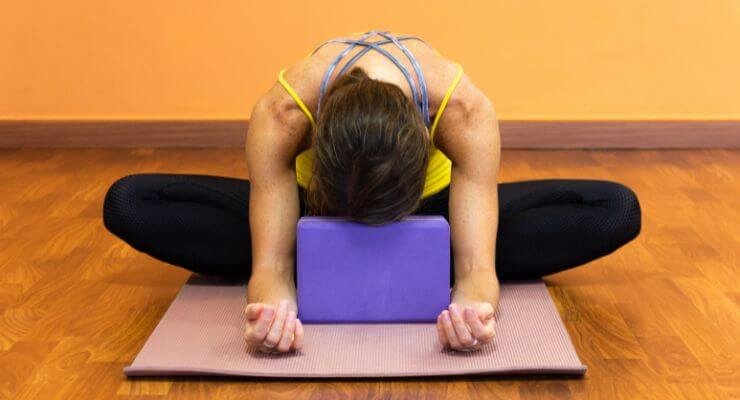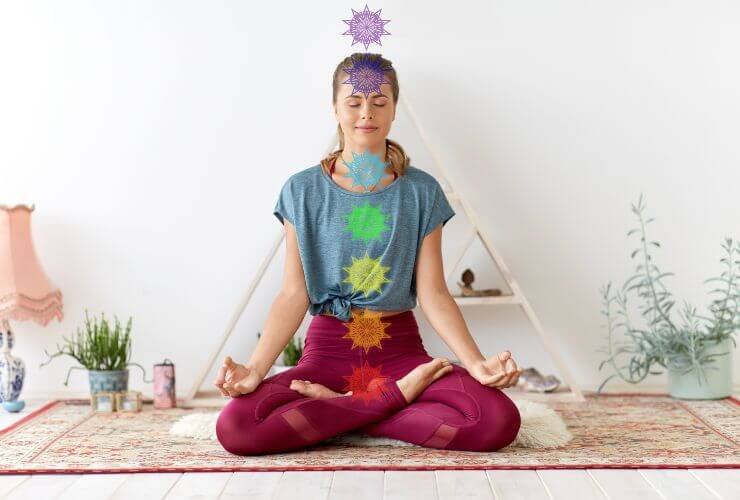Supta Vajrasana, also known as Sleeping Thunderbolt Pose, deepens the stretch of the traditional Vajrasana (Thunderbolt Pose), targeting the thighs, hips, abdomen, and spine. This asana is a more advanced pose, offering a deep stretch and numerous benefits for those who can practice it comfortably.
How to Do Supta Vajrasana (Sleeping Thunderbolt Pose)
- Starting in Vajrasana: Begin by sitting on your heels in Vajrasana (Thunderbolt Pose), with your knees together, and your back straight.
- Transitioning to Supta Vajrasana: Place your hands on the floor behind you, and slowly lean back, using your arms to support your weight as you go down. First, come onto your elbows and forearms, and if comfortable, lower your back all the way to the floor, arching your spine.
- Final Position: Once fully reclined, if it’s accessible, bring your arms overhead and grab your elbows above your head. Keep your knees together and pressed to the floor as much as possible.
- Breathing and Holding the Pose: Breathe deeply and hold the pose for as long as comfortable, aiming for 30 seconds to a minute. To release, use your arms to support yourself as you come back up to Vajrasana.
Benefits of Supta Vajrasana
- Improves Digestion: The pressure on the abdomen helps stimulate digestive organs, aiding digestion.
- Enhances Spinal Flexibility: The backward arching of the spine increases spinal flexibility and relieves tension in the back.
- Stretches the Thighs and Hips: Offers a deep stretch to the thighs, hips, and hip flexors, improving flexibility in these areas.
- Stimulates the Nervous System: The pose can help in calming the mind and stimulating the nervous system, promoting relaxation.
- Improves Respiratory Function: The chest expansion involved in the pose enhances lung capacity and respiratory function.
Contraindications
- Knee Issues: Individuals with serious knee injuries or conditions should avoid this pose due to the pressure it places on the knees.
- Lower Back Pain: Those with lower back pain or injuries should proceed with caution or avoid this pose, as it involves significant spinal extension.
- Heart Problems: As the pose increases pressure on the heart, those with heart conditions should consult a healthcare provider before attempting.
- Pregnancy: Pregnant women should avoid this pose due to the intense abdominal pressure.
Modifications and Tips
- Use Props: Placing a bolster or folded blanket under your spine can provide support and reduce the intensity of the stretch.
- Warm-Up Properly: Engage in a thorough warm-up focusing on the spine, hips, and knees before attempting this pose.
- Listen to Your Body: Only go as far into the pose as comfortable, avoiding any pain or discomfort.
Conclusion
Supta Vajrasana is a challenging yet rewarding pose that offers multiple benefits, from improving digestion and spinal flexibility to enhancing respiratory function. It’s a deep stretch that requires patience and gradual progression. Practitioners should approach this pose with mindfulness and respect for their body’s limits, using modifications as needed to ensure safety and comfort.




